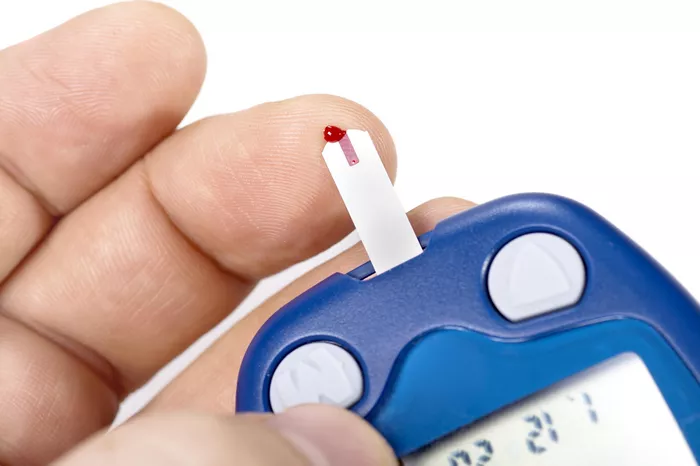Hyperglycemia, characterized by elevated blood glucose levels, is a common and significant concern in patients receiving medical nutrition support, particularly through tube feeding. As more individuals depend on enteral nutrition for sustaining their nutritional needs—whether due to illness, surgery, or chronic conditions—the management of blood glucose levels becomes a critical aspect of care.
In this article, we will explore the relationship between tube feeding (also known as enteral nutrition) and hyperglycemia. We will discuss why hyperglycemia can occur in patients receiving tube feeding, the underlying mechanisms involved, and strategies for managing and preventing this complication in clinical settings.
Understanding Hyperglycemia
Hyperglycemia occurs when blood glucose levels rise above the normal range, typically defined as fasting blood glucose levels above 126 mg/dL (7.0 mmol/L) or non-fasting levels above 200 mg/dL (11.1 mmol/L). Persistent hyperglycemia can lead to serious health complications, particularly for individuals with diabetes or other metabolic disorders.
Causes and Risk Factors for Hyperglycemia
Hyperglycemia can arise from various factors, including:
Insufficient insulin production: This is common in individuals with type 1 or type 2 diabetes.
Insulin resistance: In type 2 diabetes and other metabolic conditions, cells do not respond properly to insulin, leading to elevated blood sugar levels.
Medications: Certain medications, such as corticosteroids, can cause hyperglycemia.
Illness and stress: Acute illness, infection, or surgical stress can trigger the release of hormones such as cortisol and adrenaline, which increase blood sugar levels.
Dietary intake: Consuming large amounts of carbohydrates, especially simple sugars, can lead to postprandial (after eating) spikes in blood glucose levels.
Tube Feeding: An Overview
Tube feeding is a method of providing nutrition to individuals who are unable to consume food orally. This may be due to conditions such as stroke, neurological disorders, head and neck cancers, or severe gastrointestinal dysfunction. Enteral nutrition is delivered directly into the gastrointestinal tract through a feeding tube, which may be placed in the stomach (gastric feeding) or the small intestine (jejunal feeding).
Types of Enteral Formulas
Enteral nutrition formulas are carefully designed to meet the nutritional needs of patients, and they come in various formulations depending on the patient’s specific condition. These formulas typically contain macronutrients (carbohydrates, proteins, and fats) and micronutrients (vitamins and minerals) in varying proportions. The composition of the formula can significantly influence blood sugar levels.
There are three main types of enteral formulas:
Standard polymeric formulas: These contain whole proteins, carbohydrates, and fats and are suitable for most patients without specific metabolic disorders.
Elemental or semi-elemental formulas: These contain partially or fully hydrolyzed proteins and fats and are often used for patients with malabsorption or digestive issues.
Specialized formulas: These are designed for specific conditions such as diabetes, renal failure, or respiratory disorders. For instance, diabetes-specific formulas have lower carbohydrate content and a higher proportion of fat and fiber to help manage blood glucose levels.
Can Tube Feeding Cause Hyperglycemia?
Hyperglycemia is a well-documented complication of tube feeding, particularly in hospitalized patients and those with underlying metabolic disorders, such as diabetes. The development of hyperglycemia during tube feeding can be attributed to several factors, including the composition of the enteral formula, the rate of administration, the patient’s underlying health status, and their ability to manage insulin production and sensitivity.
High Carbohydrate Content in Enteral Formulas
One of the primary contributors to hyperglycemia in tube-fed patients is the carbohydrate content of the enteral formula. Carbohydrates are broken down into glucose in the body, which raises blood sugar levels. Many standard enteral formulas are designed to provide a balanced distribution of macronutrients, with carbohydrates often making up a significant proportion of the caloric content.
In patients with normal insulin function, the body is typically able to handle the glucose load from carbohydrates efficiently. However, in patients with impaired insulin production or insulin resistance (such as those with diabetes), the carbohydrate load from enteral nutrition can overwhelm the body’s capacity to manage blood sugar levels, leading to hyperglycemia.
Continuous vs. Bolus Feeding
The method of tube feeding can also influence the risk of hyperglycemia. There are two primary methods of delivering enteral nutrition:
Continuous feeding: The formula is delivered slowly and continuously over 24 hours through an infusion pump. This method tends to have a more gradual effect on blood glucose levels, as the carbohydrate load is spread out over time.
Bolus feeding: The formula is delivered in larger volumes at specific intervals, mimicking normal meal patterns. Bolus feeding can result in sharp spikes in blood sugar levels, particularly in patients who are insulin resistant or unable to produce sufficient insulin.
Studies have shown that continuous feeding is associated with more stable blood glucose levels compared to bolus feeding, especially in critically ill patients. However, both methods can potentially lead to hyperglycemia if not carefully managed.
Underlying Health Conditions
Patients with pre-existing conditions, such as diabetes or metabolic syndrome, are at a higher risk of developing hyperglycemia during tube feeding. These patients often have impaired insulin secretion or insulin resistance, which makes it more difficult for their bodies to regulate blood sugar levels in response to the carbohydrate load from enteral nutrition.
In addition, critically ill patients, including those in the intensive care unit (ICU), often experience stress-induced hyperglycemia. This occurs due to the body’s stress response, which involves the release of counter-regulatory hormones such as cortisol and glucagon. These hormones increase glucose production in the liver and reduce insulin sensitivity, exacerbating the risk of hyperglycemia during tube feeding.
Medications and Tube Feeding
Certain medications commonly used in hospitalized or critically ill patients can also contribute to hyperglycemia. For example, corticosteroids, which are frequently prescribed for conditions such as asthma, inflammatory disorders, or organ transplantation, can cause significant increases in blood sugar levels by promoting gluconeogenesis (glucose production) in the liver and reducing insulin sensitivity.
In patients receiving enteral nutrition, the combination of high-carbohydrate formulas and medications that raise blood sugar levels can increase the risk of hyperglycemia.
The Consequences of Hyperglycemia in Tube-Fed Patients
Uncontrolled hyperglycemia in patients receiving tube feeding can lead to a range of complications, including:
Increased risk of infection: Elevated blood sugar levels can impair immune function, making patients more susceptible to infections, including pneumonia, urinary tract infections, and sepsis.
Delayed wound healing: Hyperglycemia can impair the body’s ability to heal wounds, increasing the risk of pressure ulcers and surgical site infections.
Electrolyte imbalances: Hyperglycemia can lead to osmotic diuresis (increased urination), which can cause dehydration and imbalances in electrolytes such as sodium and potassium.
Increased risk of cardiovascular events: Persistent hyperglycemia is associated with a higher risk of cardiovascular complications, including heart attacks and strokes.
For critically ill patients, hyperglycemia is associated with increased mortality and longer hospital stays. Therefore, managing blood sugar levels in tube-fed patients is of paramount importance.
Strategies for Managing Hyperglycemia in Tube-Fed Patients
Managing hyperglycemia in patients receiving enteral nutrition requires a multifaceted approach that includes careful monitoring of blood sugar levels, individualized nutritional planning, and appropriate medical interventions.
Selection of Appropriate Enteral Formulas
For patients with diabetes or those at high risk of hyperglycemia, selecting an appropriate enteral formula is crucial. Diabetes-specific formulas are available, which are designed to minimize blood sugar spikes. These formulas typically have:
Lower carbohydrate content: To reduce the glycemic load.
Higher fat content: To provide a more stable energy source without causing significant increases in blood sugar levels.
Added fiber: To slow the absorption of carbohydrates and promote more stable blood glucose levels.
In some cases, standard formulas can be modified by the addition of soluble fibers or fat emulsions to slow the release of glucose into the bloodstream.
Adjusting the Rate of Tube Feeding
The rate at which enteral nutrition is delivered can have a significant impact on blood sugar levels. Slower, continuous feeding is often associated with more stable blood glucose levels compared to bolus feeding, especially in patients with impaired insulin function.
For patients experiencing hyperglycemia with bolus feeding, switching to a continuous feeding regimen or reducing the volume and frequency of bolus feedings may help mitigate blood sugar spikes.
Regular Monitoring of Blood Glucose Levels
Frequent monitoring of blood glucose levels is essential for patients receiving enteral nutrition, particularly those at risk of hyperglycemia. Blood glucose should be checked regularly, with adjustments made to the feeding regimen or insulin therapy as needed.
In critically ill patients, blood glucose levels should ideally be maintained within a target range of 140-180 mg/dL (7.8-10.0 mmol/L) to minimize the risk of complications. For patients with diabetes, more stringent blood glucose targets may be appropriate, but this should be determined on an individual basis in consultation with the healthcare team.
Insulin Therapy
Many patients receiving tube feeding will require insulin therapy to manage hyperglycemia. The type and dosage of insulin should be tailored to the patient’s needs, taking into account their baseline insulin sensitivity, the composition of the enteral formula, and their overall health status.
For patients receiving continuous tube feeding, basal insulin (long-acting) may be administered to provide a steady supply of insulin throughout the day. For patients receiving bolus feeding, rapid-acting insulin can be administered before or after feedings to manage postprandial blood glucose spikes.
Managing Medications
If medications such as corticosteroids are contributing to hyperglycemia, adjustments to the medication regimen may be necessary. In some cases, reducing the dosage of these medications or switching to alternative therapies can help mitigate hyperglycemia. However, this should be done under the supervision of a healthcare provider.
See also: Who is at Risk for Hyperglycemia?
Conclusion: The Risk of Hyperglycemia in Tube Feeding and How to Mitigate It
Tube feeding can indeed cause hyperglycemia, particularly in patients with pre-existing conditions such as diabetes or those experiencing acute illness and stress. The carbohydrate content of enteral formulas, the method of feeding, and the patient’s underlying health status all play a role in determining the risk of hyperglycemia.
Managing hyperglycemia in tube-fed patients requires a comprehensive approach, including the selection of appropriate enteral formulas, careful monitoring of blood glucose levels, adjustments to the feeding regimen, and, in many cases, insulin therapy. By implementing these strategies, healthcare providers can help mitigate the risk of hyperglycemia and improve outcomes for patients receiving enteral nutrition.
Related topics:
Can Hyperglycemia Occur Without Diabetes?



























